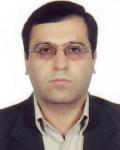| Authors | Mohsen Niknam Sharak, |
|---|
| Journal | JOURNAL OF QUANTITATIVE SPECTROSCOPY & RADIATIVE TRANSFER |
|---|
| Page number | 1-13 |
|---|
| Serial number | 288 |
|---|
| Volume number | 1 |
|---|
| IF | 2.6 |
|---|
| Paper Type | Full Paper |
|---|
| Published At | 2022 |
|---|
| Journal Type | Typographic |
|---|
| Journal Country | Iran, Islamic Republic Of |
|---|
| Journal Index | JCR،Scopus |
|---|
Abstract
The radiative transfer equation (RTE) is an integro-differential equation and solving it is time-consuming except in a few specific cases. A fast method based on dynamic mode decomposition (DMD) is introduced for solving the RTE in an absorbing-emitting and scattering medium. First, some parameters are consid- ered as independent variables. The RTE is solved for different values of these parameters (known input vectors) using the discrete ordinates method ( S 6 approximation), and the system responses generate the snapshot matrix. Then using the DMD technique, the dynamic modes are constructed, so the degree of freedom of the system is decreased. The reduced-order model (ROM), called DMD-RBF, is generated by combining the DMD and the radial basis functions. Two cases, radiative equilibrium and medium with known temperature (isothermal and non-isothermal), are considered. The accuracy of the model is inves- tigated using random input vectors. The results show that the DMD-RBF has a good agreement with the numerical solutions. Comparison between the ROM and numerical CPU times shows the high efficiency of the ROM. The results also show that the problem complexity does not affect the computational cost. For all cases, the CPU time of the ROM is of the order of 0.01 seconds.
Paper URL
